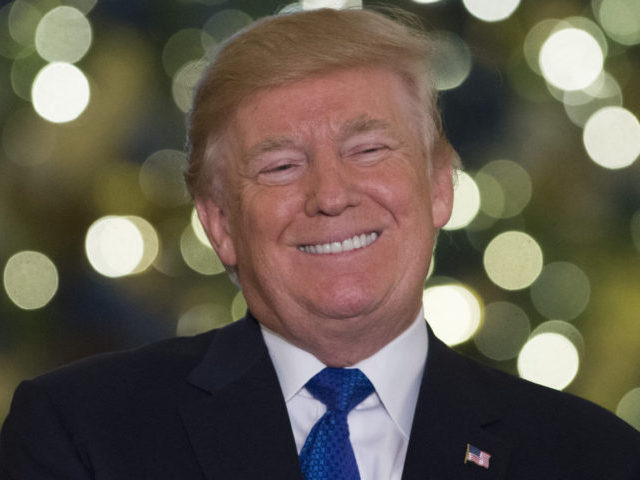The Fed put its considerable weight behind tax cuts Wednesday, announcing that it sees tax cuts as contributing to economic growth without driving inflation higher than its target.
The Federal Reserve’s policymakers upgraded their forecast for economic growth next year and lowered their projections for unemployment while leaving their view of interest rates and inflation unchanged.
The median forecast of members of the Federal Open Markets Committee, its monetary policy body, for economic growth in 2018 rose from 2.1 percent to 2.5 percent, an increase of nearly one-fifth. As well, the Fed’s median projection for unempl0yment fell to 3.9 percent from 4.1 percent.
Fed chief Janet Yellen said these improved projections reflect the expectations of tax cuts, which she said is viewed by many Fed officials as stimulating increased economic growth and improved economic productivity.
Despite the raised expectations for growth and lower expected unemployment, the Fed left its expectations for interest rates and inflation unchanged.
That combination of higher growth and steady inflation and rates signals that the Fed does not expect that it will stand in the way of stronger economic growth.
That runs contrary to the view of many Fed watchers, who have long predicted that the central bank would increase rates farther the more Trump’s economic plans stimulated growth.
For example, here’s how the New York Times described the outlook in its pre-Fed meeting report:
The Fed predicted in September that it would increase rates three times in 2018 and two more times in 2019. On Wednesday, the Fed is also scheduled to release a new round of economic projections. Some Wall Street analysts expect stronger growth will push the Fed to add at least one rate increase in each of those years.
“Most F.O.M.C. members had not built tax reform into their September projections, and progress has been much more rapid than they (or we) expected,” Seth Carpenter, chief United States economist at UBS, wrote in a research note, referring to the Fed’s policymaking arm, the Federal Open Market Committee.
He said the Fed was likely to predict faster growth, less unemployment — and more rate increases
Yellen flatly rejected that idea.
“We continue to believe that a gradual path remains appropriate even with tax policy changes that are expected,” Yellen said.
In other words, tax cuts won’t trigger rate hikes.
The Fed’s revised views of growth also took by surprise many who predicted the GOP tax reform would add little to economic growth. While Yellen said that tax cuts were just one of many factors considered, she did not shy away from affirming that tax cuts were part of the decision to upgrade growth. Other factors include the numerous pieces of economic data that have come in in recent months indicating a strengthening economy.
The Fed’s range of economic growth projections also moved up. At the Fed’s September meeting, Fed officials’ forecasts of economic growth in 2019 ranged from 1.7 percent to 2.6 percent. On Wednesday, the forecasts ranged from 2.2 percent to 2.8 percent. In other words, the median forecast is now close to the top of September’s range. And the top of the range is close to the 2.9 percent the Trump administration says it includes in its forecasts.
To be sure, the Fed does not yet expect the 2.9 percent growth projected by the Trump administration or the even higher levels of growth promised by Trump himself. It said it sees growth falling in 2019 and 2020 to around 2 percent and left its long-term expectation for GDP growth unchanged at 1.8 percent.
Yellen, however, said the Fed would “welcome” even growth at those levels so long as inflation remains subdued.

COMMENTS
Please let us know if you're having issues with commenting.